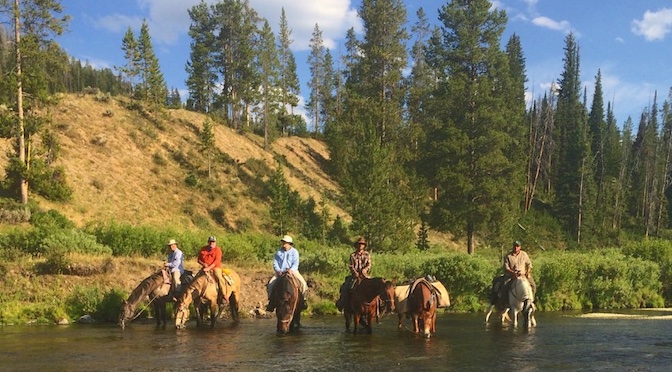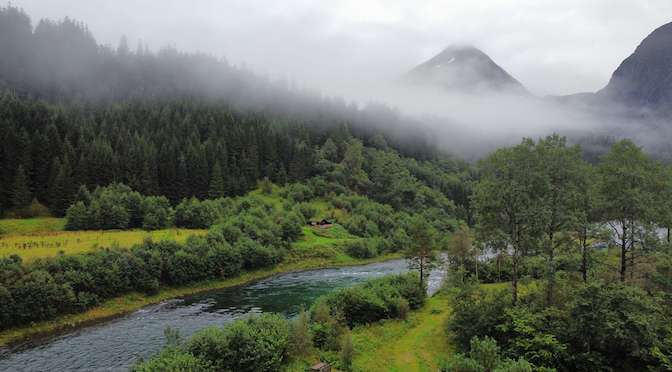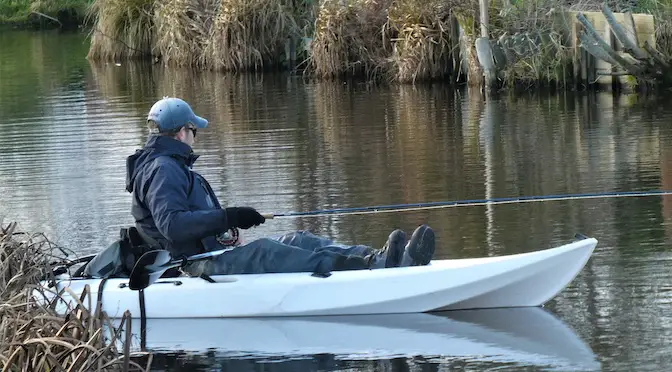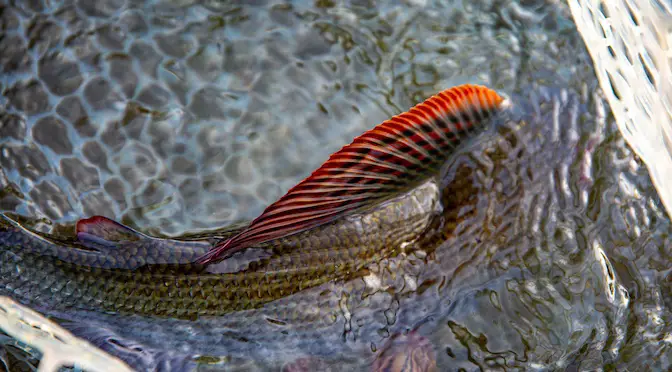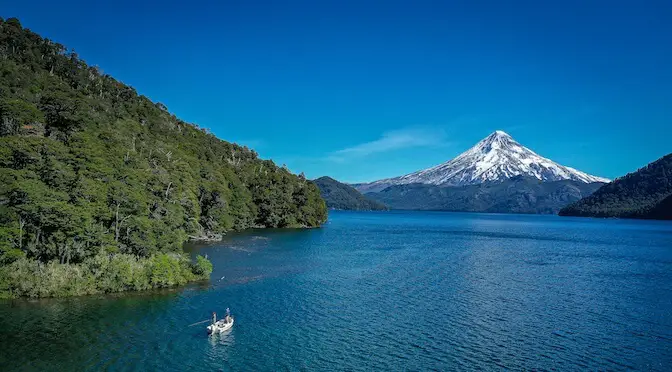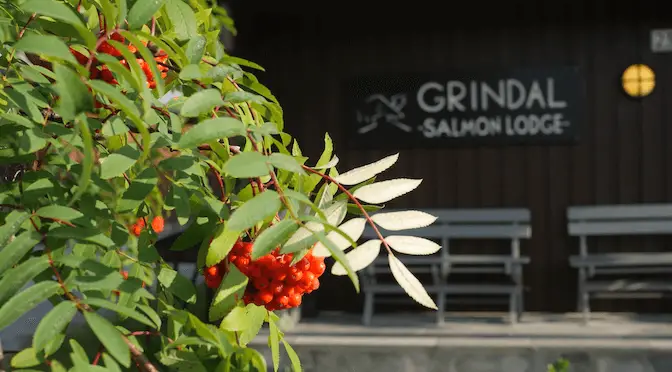Last updated on January 9th, 2024.
- Fly Fish Mongolia a Different Way – Part III - January 4, 2018
- Fly Fish Mongolia a Different Way – Part II - December 30, 2017
- Fly Fish Mongolia a Different Way – Part I - December 25, 2017
Read the first part of “Fly Fish Mongolia a Different Way” here.
Read the second part of “Fly Fish Mongolia a Different Way” here
The second day we went to a completely different place about an hour downstream of our main camp. The weather was not as pleasant as the day before and it rained for a short while. We stopped at a few places where Ganba showed us some of his most secret pools that we would be fishing on the way back. The morning’s fishing was poor with no noteworthy catches. Perhaps seven to eight fish were caught between the three of us. It seemed further proof that the fish here were indeed extremely lazy and it was a day without sunshine. After a cup of hot coffee we went back to a huge pool that we’d seen from a high cliff. There, Ganba expected us to find some taimen. Dron and Ganba went down with extra-heavy equipment while the rest of us sat on top of the cliff watching Dron try to get a big taimen. Two lenok followed his mouse but unfortunately that was the only action we saw.
Around 3.30 p.m. I went down with my 5-weight rod and decided to follow the river upstream in what I call “quick searching mode”, similar to the way I fish unknown rivers in Lapland or in Canadian wilderness areas. This means I walk faster and just pick out the good-looking spots where I make only a few casts. Nick stayed with Daasai and Bayara and we agreed to meet each other at another big pool about three to four kilometres upstream. I took a few pictures of Dron and Ganba and then moved on. After I had walked about half a mile, the bank on the far side slowly got higher until it was around one and half meters above the river. I love high banks in general, but this one was particularly nice as there was a beautiful run right off the high bank. It was at the tail end of a pool that formed about 150 yards upstream. The river had cut deep grooves into the riverbed here and it looked a lot deeper than the water I had just passed. I then saw a tiny but serious-looking rise, the first rise in two days, then another appeared followed by a third rise, all within a few seconds of each other. It looked like small grayling or trout were taking emergers just below the surface and I immediately changed my hopper for a Klinkhamer, which is usually a deadly fly in this kind of feeding behaviour. The head of the pool had a strong but very nice current, very similar to what in Scandinavia I have often described as the most perfect Klinkhamer water. I love this kind of broken and turbulent water but, of course, I first had to cast for the fish rising in the much slower flow in the tail of the pool.
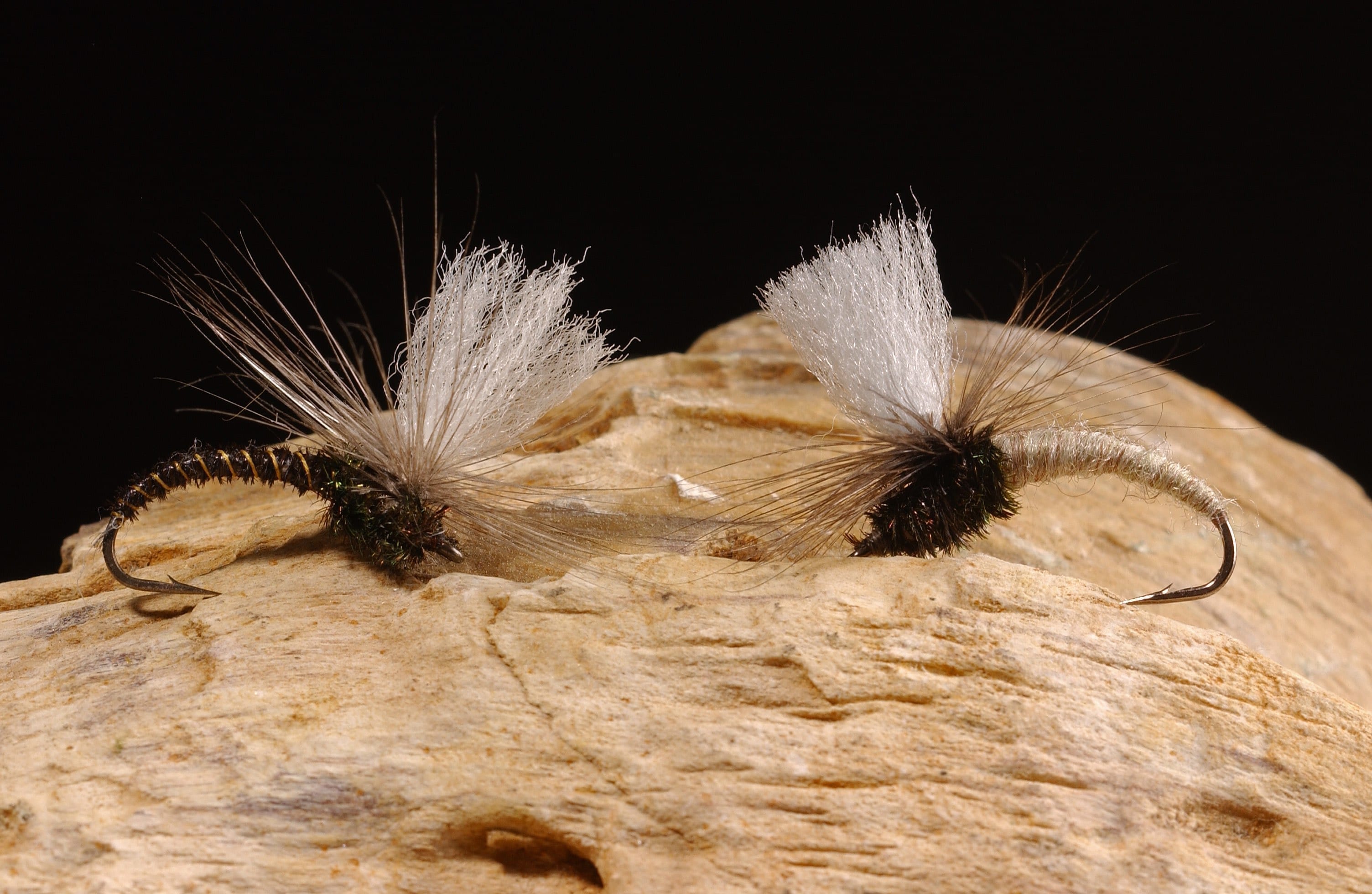
I hooked a beautiful lenok on my first cast and suddenly, like magic, the fishing turned crazy. The entire pool seemed full of hungry fish and they went mad for Klinkhamer Specials. I fished up slowly in the direction of the head of the pool. It didn’t matter where I cast. On each throw, one, two and occasionally three fish would start rising to my fly. Not often have I seen such aggressive behaviour around my fly. All they wanted was that deep, surface-hanging parachute fly tied on a big size 8 Klinkhamer hook. Ganba and Dron meanwhile showed up in the bend of the river about 500 yards downstream. I gave them a shout and they ran up as soon they saw I was catching fish after fish. Ganba took my camera and Dron started to fish about 50 yards upstream of me. Until then I had only fished 40 yards up from the tail end of the pool. There was plenty of space to fish because this wonderful pool was immense, not in width, but in length.
Dron still used his hopper, but didn’t catch anything. So I told him to change to a Klinkhamer. At first he refused because he wanted to test his amazing hoppers, but after I caught five more fish he finally accepted a handful of Klinkhamer from me. In no time he was catching fish after fish. After I had landed many beautiful lenoks I quit fishing and sat on the bank taking pictures of Dron catching yet more fish. I left him at the pool and contemplated how this slow start had turned into one of the most prolific catches I have ever made on Klinkhamer. I also analysed the flow into the pool more closely and made an interesting observation: The biggest fish preferred the slower water and were feeding in the tail, while the smaller fish liked to hunt in the faster water at the head of the pool. I memorised the setting of the river well because I had seen several similar spots to this one when we were driving beside the river.
Although we could easily have caught a lot more fish we decided to give the pool a rest and continued our way further upstream. After all the fun at this spot Dron and Ganba named the pool the G-spot and nowadays it seems to be one of the most famous pools on the entire river. We left this special pool for another day because we all wanted to return here. Continuing upstream I came across a few smaller but productive pools and, before reaching our meeting point I, found another bigger, good-looking pool with a nice long run of broken water coming into it where I had yet more excellent dry fly fishing.
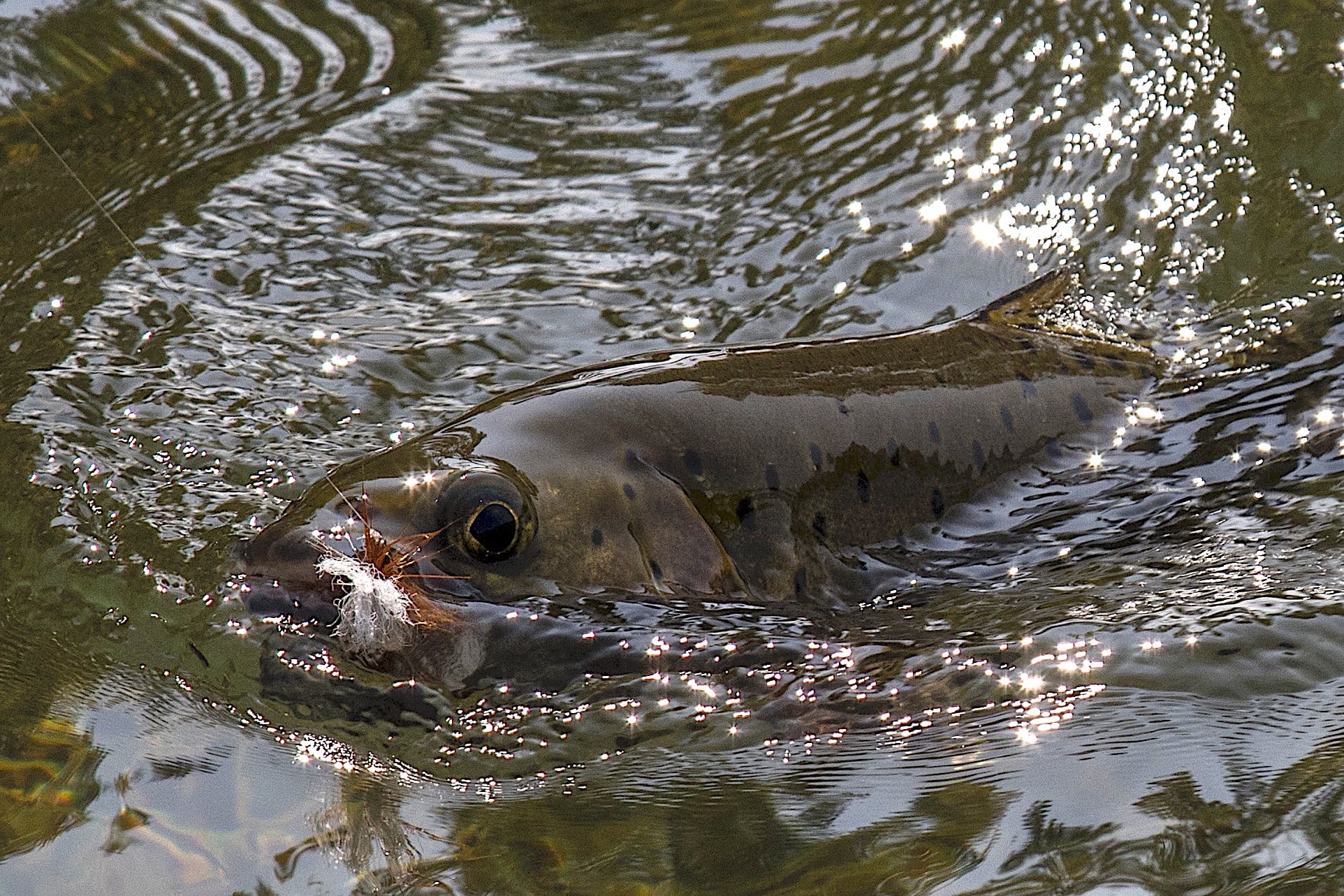
The third day’s fishing turned out to be very special. The weather was good and we left a little early because the main goal was to travel a long way downstream from our main camp. Ganba actually wanted to drive until the vehicle tracks beside the river completely disappeared. He had never fished this area before and it was the most remote place we got to during our trip. When we passed one of Ganba’s best spots from a previous trip, we were so stunned by the river and the surrounding landscape that he stopped the car so we could give it a try. Dron, Nick and Ganba went upstream while I chose to go downstream to fish a great-looking run similar as the G-spot pool. It was still early and after the lessons I had learned from the previous two-day’s fishing I did something completely different. For the first time I used nymphs and had excellent results fishing my Leadhead, Remerger and Caseless Caddis. So the fish indeed feed in the morning; you just had to tempt them with some heavy bottom bouncers.
I worked my way downstream, waded a little deeper, and noticed there was little difference to the outcomes whether fishing downstream or upstream. I had been strongly advised not to wade too far into the water, or indeed to wade at all, and that I should mainly fish upstream, because lenok trout are characteristically very spooky. But I am not of the opinion that you necessarily must only fish upstream because I have plenty of experience with downstream fishing and I often prefer it.
I walked a long way. The landscape was very open with hardly a tree in sight; the water was shallow and crystal clear and the fish might have been be spooky but they were just fine. I had switched back to dry fly again and made a remarkable discovery. So far I had given most of the shallow water a miss, simply because I didn’t see any fish in it and therefore believed the shallows didn’t hold any. Not so. The problem was that you simply couldn’t see the fish because they were so well camouflaged. Some of the shallows with fine gravel beds turned out to be full of fish, which meant I had to adjust my angling strategies again and concentrate on shallow water too now. I had also hooked a taimen on a size 4 Klinkhamer in a deep bend covered in logs and trees but he ran into the submerged branches and I will never know if I had been able to land him or not with my 5-weight rod. Then around 2.00 p.m. Ganba arrived to collect us again for lunch.
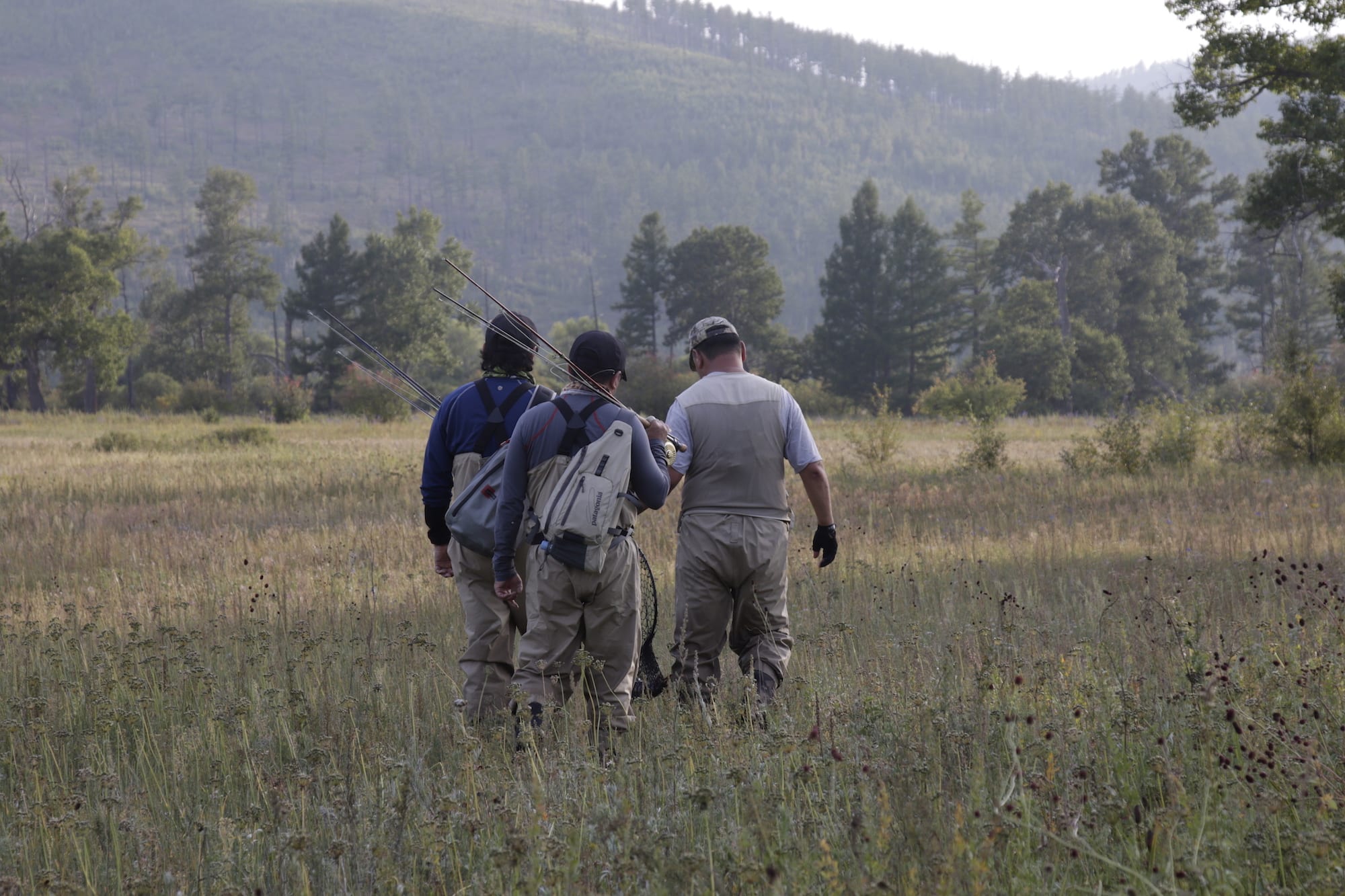
After lunch we changed plans a little. I had seen some very promising water further upstream that I really wanted to try, so we all agreed on going upstream with the driver following us in the car so we wouldn’t waste time walking back. I passed the places I had already fished and went straight to the good-looking water I wanted to fish. Now feeling more experienced on the river I was convinced this pool would hold fish. But I didn’t hook any. I tried a little longer and eventually Nick passed me. I made one last change of fly, opting for something silly. It’s a tactic I often try in situations like this. I tied on one of the size 2/0 bombers with long rubber legs that Gordy had given to me. In the same pool I had been fishing totally unsuccessfully for nearly 20 minutes I landed 13 fish in 13 casts with Gordy’s fancy bomber. Nick couldn’t believe it. While continuing my way upstream with this unbelievably huge bomber fly, I actually did extremely well. In fact it was my best spell of fishing in Mongolia so far.
Around 5.00 p.m. after a cup of coffee we went back to Ganba’s old plan and followed the track beside the river until it ended. Over the last few miles the river wasn’t visible anymore because the river valley became forested. We expected to find the river hidden somewhere between the mountains and the tree line. We jumped out of the car and searched for the river on foot because the vehicle tracks had stopped in the middle of nowhere and Ganba didn’t want to do any damage by driving around in an unspoiled landscape. After 20 minutes we found the river running in the middle of a treed-lined landscape. Nick and Dron went upstream, while this time I fished with Ganba. The water was a little deeper and most of the pools were in total shade. I still had my huge bomber on and gave it a try. The fly was taken immediately and for two hours the fishing was quite unbelievable. Then we returned to our meeting point. Nick and Dron hadn’t been so successful because the river upstream was quite shallow. We drove back in a magnificent sunset.
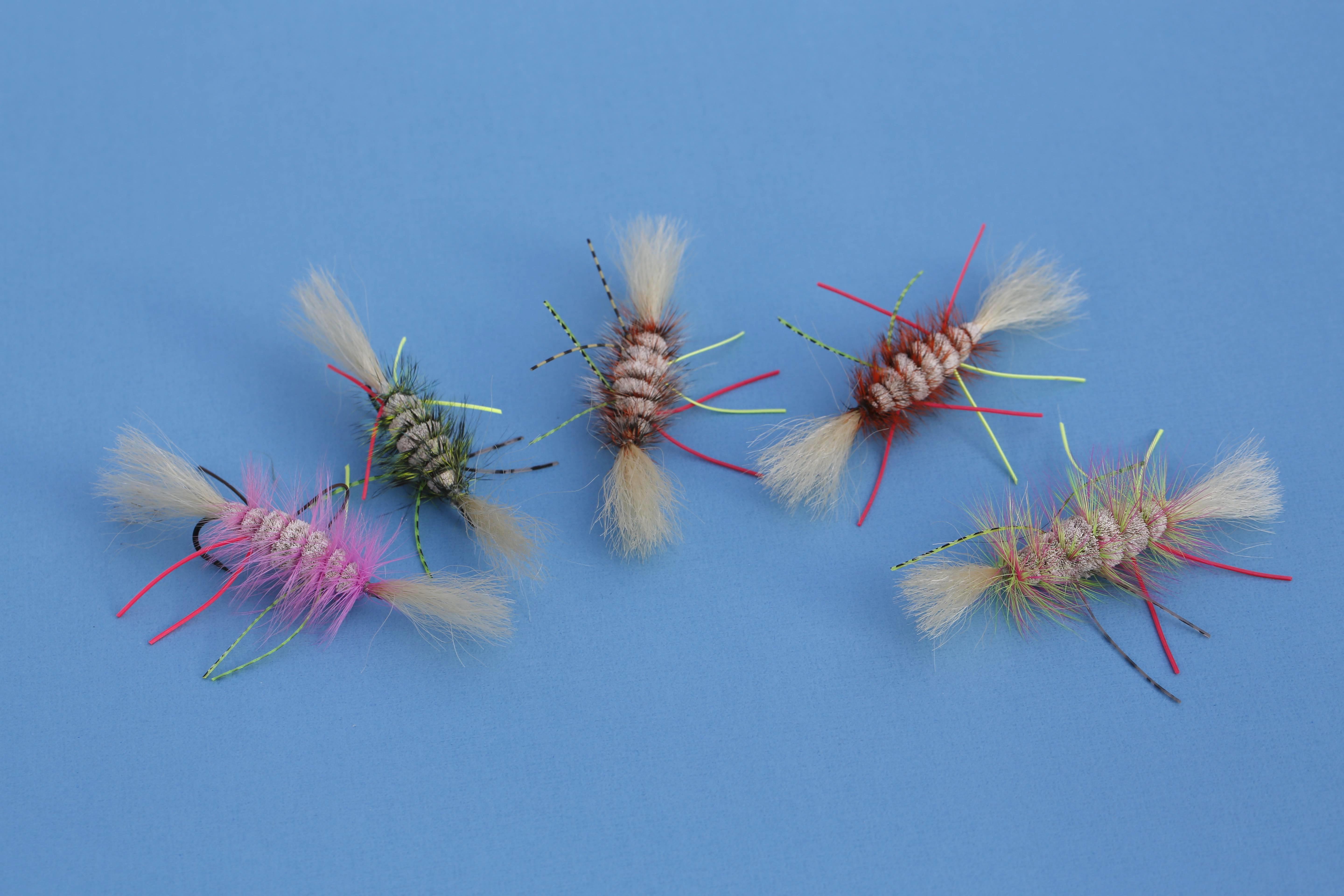
Day four turned out completely different. This time we drove upstream and did very well to start with, but as we continued walking further upstream the river got more and more shallow. We had little luck and saw hardly any sign of fish. We had covered a lot of ground when a big thunderstorm was lurking and we decided to head back to the camp for lunch. After lunch the thunder kept on rolling but the storm didn’t seem to get closer. I fished the river close to the camp. The light was bad and the sound of thunder was menacingly loud and a bit frightening. It remained so for at least two hours, but it only rained for a few minutes. In spite of the weather I caught a good number of nice Amur trout on a black Klinkhamer Special with orange ribbing. They clearly prefered to feed in bad weather. I had enjoyed a wonderful early morning and perfect late afternoon’s fishing as well. Dron and Nick went out with Ganba and had also done quite well.
On the last day I spent a few hours taimen fishing with my 7-weight rod and had two follows, but sadly neither of them grabbed my fly. After that I went to the G-spot pool again, and we fished another new stretch that we hadn’t visited before. Here Dron caught a small taimen on a Klinkhamer Special and we again spent the evening fishing close to the camp. Then we cleaned up our gear and packed our stuff for our next trip – but that’s another story all of its own.

